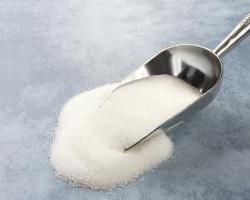12-Step Program For Sugar Addiction?
 Experts debate whether sugar is truly addictive. Some say it is just a simple dietary issue – just stop eating sugar and you’ll be fine. However, others say sugar “addicts” suffer the same withdrawal symptoms as drug addicts. Now one researcher says it is time for a 12-step program for sugar addiction.
Experts debate whether sugar is truly addictive. Some say it is just a simple dietary issue – just stop eating sugar and you’ll be fine. However, others say sugar “addicts” suffer the same withdrawal symptoms as drug addicts. Now one researcher says it is time for a 12-step program for sugar addiction.
According to a report in theVancouver Sun, Arthur Trotzky of the Israel Counseling and Treatment Center of the North said eating disorders, including sugar, are addictions and should be treated with Alcoholic Anonymous-style 12-step programs. He has treated bulimics that way in the past.
Trotzky’s research, published in the International Journal of Adolescent Medicine and Health, found that addiction treatment resulted in helping young women overcome their problem.
This does not speak specifically to sugar addiction, but it does suggest that it could help such people.
While much research says sugar is not addictive, there are contradicting studies. Bart Hoebel at Princeton University found that intermittent, excessive sugar intake in rats produced psychological, behavioral and neurochemical symptoms of addiction. Hoebel concluded that “sugar can be addictive.”
But the Sun writes:
Although we must always be careful in applying the results of animal models to humans, Hoebel’s research suggests that, theoretically at least, it might be possible for humans to develop an addiction to sugar. If so, then treatment of sugar addiction would properly be influenced by addiction treatment rather than by standard models of dieting.